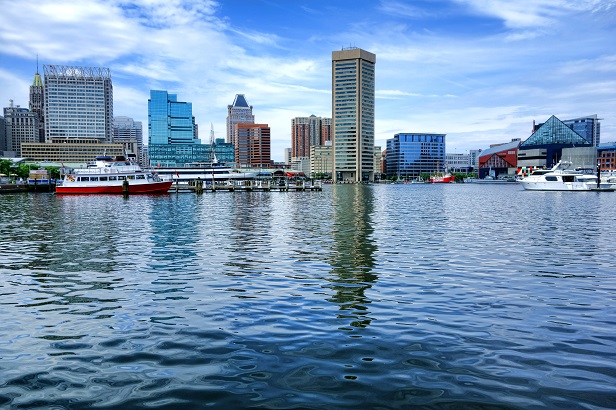BALTIMORE—Distribution networks are targeting the Port of Baltimore as a key fulfillment hub for the Baltimore-Washington super-market and that is having an effect on the surrounding industrial markets, according to a research note by JLL. This has been a trend in the making since 2013. Over that time period, container traffic flowing into the Port of Baltimore has increased 51%, JLL reports—flows that are partially stemming from increased West Coast port congestion, which has pushed vessels originating from Asia to call East Coast ports via the newly expanded Panama Canal.
“Due to this shift in strategy, both logistics companies and traditional retailers have contributed to record real estate demand in Port-adjacent nodes specifically relying upon the Port of Baltimore's ability to handle post-Panama Canal expansion vessels and its strategic location along I-95,” JLL writes.
Perhaps most notably, in 2016 Costco expanded its port-centric operations with the addition of a 600,000-square foot warehouse in Frederick County, MD. Since that expansion, more than 24 additional logistics' requirements larger than 150,000 square feet have landed within 15 miles of the Port, JLL says. Development has followed demand: 8.7 million square feet of new construction is underway in the region, of which 61% is already pre-leased.
Planning for Future Growth
Both operators and state government are co-investing to sustain the growing port and fuel the subsequent real estate momentum, JLL says. In 2017, the Maryland Port Administration purchased Point Breeze Industrial Park for $55 million. The 70-acre industrial park, directly adjacent to Seagirt Marine Terminal, will be razed and turned into additional container storage, growing the Port's land volume by 25% and adding 1,650 Port-related jobs.
Ports America is also investing to modernize the Wharf at the Port of Baltimore, JLL notes. Currently the company is dredging a second 50-foot berth to allow for larger vessels. Additionally, $135 million is allocated to purchase cranes and other infrastructure to service the improved Wharf and increase the efficiency of processing containers.
© Touchpoint Markets, All Rights Reserved. Request academic re-use from www.copyright.com. All other uses, submit a request to [email protected]. For more inforrmation visit Asset & Logo Licensing.








